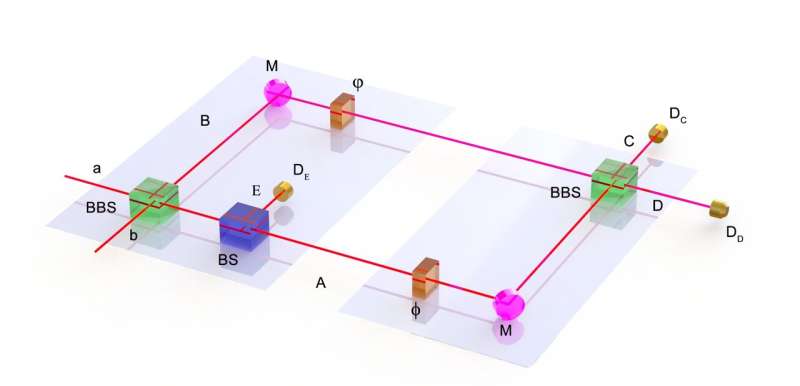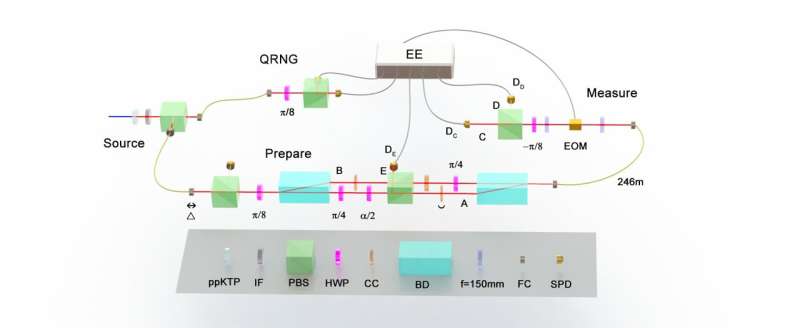January 17, 2024 dialog
This article has been reviewed according to Science X's editorial process and policies. Editors have highlighted the following attributes while ensuring the content's credibility:
fact-checked
peer-reviewed publication
trusted source
written by researcher(s)
proofread
Researchers observe the wave-particle duality of two photons

Understanding the nature of quantum objects' behaviors is the premise for a reasonable description of the quantum world. Depending on whether the interference can be produced or not, the quantum object is endowed with dual features of a wave and a particle, i.e., the so-called wave-particle duality (WPD), which are generally observed in the so-called mutually exclusive experimental arrangements in the sense of Bohr's complementarity principle.
Theoretical physicist John Wheeler proposed the delayed-choice experiment in the 1980s, pointing out that the methods used to observe photons will ultimately determine whether their behavior is like particles or waves.
In 2011, Ionicioiu and Terno proposed a quantum version of the delayed-choice experiment, by which the photon can be forced into a superposed state of the particle and wave and exhibits continuous morphing between those two sides with changing the controlling parameter of the ancilla.
In a recent study published in Physical Review A, we have developed a theory and carried out experiments to investigate dual behaviors of one and two photons as a wave or a particle, relying on the setup schematically sketched in Fig. 1 and detailed in Fig. 2.

By using our proposed setup, we were able to watch purely wave-like or purely particle-like or wave-particle-superposition-like behaviors of one photon or two photons by adjusting a single classical control parameter, α, which is proportional to the reflectivity of the beam splitter which we added to the Mach-Zehnder interferometer.
We found that the wavelengths of both one and two photons in the wave-particle superposition states remain the same as those in the pure wave states. The interference visibility in the two-photon case is always lower than that in the one-photon case. All the experimental findings agree perfectly with the theoretical predictions, certifying the relevance of the setup we have proposed.
Our scheme for a delayed-choice experiment adopts a device-independent prepare-and-measure scenario to test the hidden-variable model with purely classical control. We calculated the corresponding dimension witnesses and revealed the violation of the linear dimension witness in some range of parameters, demonstrating the impossibility of hidden-variable models. Although in this work we considered photons, similar results would also hold for matter particles.
This story is part of Science X Dialog, where researchers can report findings from their published research articles. Visit this page for information about ScienceX Dialog and how to participate.
More information: Qing-Feng Xue et al, Single- and two-photon wave-particle superpositions: Theory and experiment, Physical Review A (2023). DOI: 10.1103/PhysRevA.108.022223
Journal information: Physical Review A
© 2024 Science X Network. All rights reserved.




















